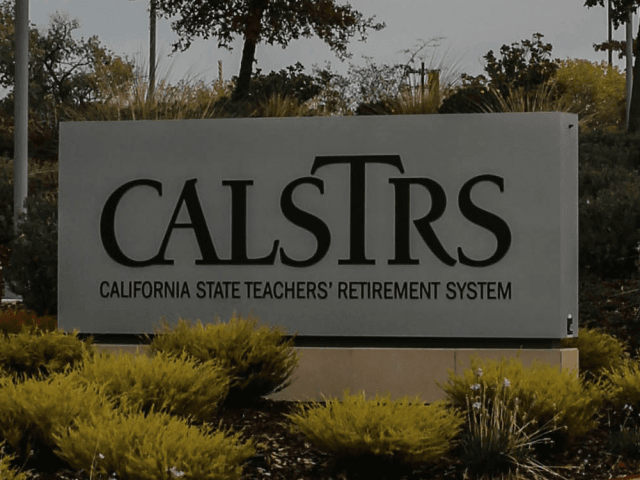California schools are about to suffer a 235% increase in the percentage of their annual budgets that are devoted to teacher pensions managed by the California State Teachers Retirement System (CalSTRS). The stunningly higher costs will slash the number of classroom teachers in all predominantly middle-class schools, but exempt inner-city school districts with high “English learners and recipients of subsidized meals.”
In the last session, the California State Legislature passed, and Governor Jerry Brown signed, Assembly Bill 1469 as a plan to fully fund the California State Teachers’ Retirement System (CalSTRS) over the next 32 years. The goal of the bill was to increase contributions from the state, employees, and school districts. But the rate increases to fund teachers’ retirements fully were never discussed.
CalSTRS CEO Jack Ehnes acknowledged last month that the $180.8 billion of investments CalSTRS holds is 50 percent less, about $90 billion, than the $273 billion the pension plan must have to cover its obligation. Mr. Ehnes said the funding gap is growing at a rate of $15 million a day, and that the pension fund would run out of money to pay benefits in 2046.
The total contribution to CalSTRS from schools, teachers and the state last fiscal year was $5.7 billion, only about half the $11.7 billion CalSTRS paid out during the year for pensions, death and survivor benefits.
To reach an actuarially acceptable level of under-funding, CalSTRS pension contribution costs for the average local school district must grow over the next seven years from 3.8 percent of annual school district budget costs to 9 percent.
Before the increase last year, the split for CalSTRS contribution rates was similar with schools and other employers contributing 8.25 percent of total salaries and the teachers’ contributing 8 percent of their paychecks. But now the schools’ contribution rate costs will more than double to 19.1 percent of pay by 2020.
The 237 percent average rise in costs will swamp the 2-to-3 percent annual revenue increases that schools receive in the state’s new K-12 “Local Control Funding Formula” (LCFF) funding plan that was adopted two years ago.
“The requirement of schools to fund these increased (CalSTRS) contributions within the LCFF undermines the goals and the promise of increased services for students in California,” according to a statement by a coalition of California local school districts.
Another potential controversy to increasing CalSTRS solvency is whether the pension rate increase creates winners and losers among school districts. The new funding formula gives extra money above the annual base grant per student to “targeted schools with large numbers of students who are English language learners, recipients of subsidized meals, and from foster homes.
CalSTRS pension costs are based on the number of teachers, which tends to be proportionate to total student enrollment. Extra money for targeted schools under the new funding formula is based on a different factor: student demographics.
This means that predominantly middle-class suburban school districts that mainly receive the base pupil grant will suffer, while inner-city school districts that receive additional targeted money for English language learners and recipients of subsidized meals will still get a substantial increase in funding.
The Brown administration has made no comment yet on the rise in the cost or the unfair burden to many school districts that the higher funding for CalSTRS pensions will cause. But later this week, Governor Brown is expected to issue his “May Revise” budget update of his January proposal for the state fiscal year beginning on July 1.
The hot stock market capital gains and IPOs should provide a surplus of several billion dollars of temporary tax revenue. It is a short-term windfall for schools, but that also assumes that lawmakers will not blow the money to restore funding for recession-era program cuts.
The Legislative Analyst’s Office warned last month. “Surprisingly perhaps, these revenue trends pose a risk for the state budget mainly because higher revenues in 2014-15 boost ongoing spending on schools and community colleges under Proposition 98, potentially making it harder for the state to balance its budget in 2015-16 and beyond.”
State lawmakers ignored CalSTRS’s pleas for pension rate increases for nearly a decade to maximize spending. As a result, the CalSTRS investment fund that is expected to pay 2/3 of future pension costs was only worth $180 billion in 2007, dropped to $112 billion in 2009, and was only back up to $191 billion on March 31, despite a major six-year bull market.
In the new fiscal year, the coalition expects the CalSTRS rate increase to increase school costs by an estimated $430 million and then to escalate, step by step, to an additional $3.7 billion a year by 2020.

COMMENTS
Please let us know if you're having issues with commenting.